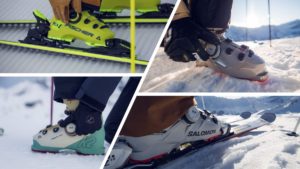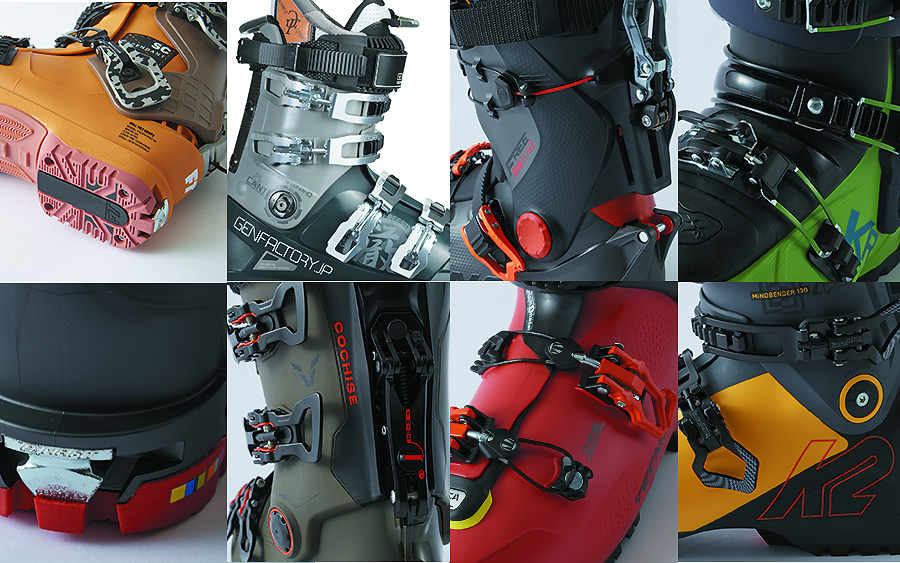Ski boots are the most important item that connects the body and the ski. Currently, in this freeride boot category, there are 2-piece and 3-piece boots due to the difference in shell structure. Let's organize the reasons and meanings of these diverse designs here. It is the basics of freeride ski boots that I want to know again.
POINT 1 | What are freeride boots?
Here, freestyle and freeriding models are collectively called "freeride boots". Originally, it seems more appropriate to call them "all-mountain boots", but some brands call resort boots "all-mountain", so there is also a meaning to distinguish them from that.
As an overall trend, both gliding and lightness (climbing) are compatible.
While maintaining the original gliding performance of ski brand boots, the stress of hiking up is reduced by reducing the weight of materials and parts. On the other hand, the so-called tour boots of mountain boot brands have evolved in shell materials and structures, and in addition to lightness and ease of walking, there are an increasing number of models that do not feel uncomfortable on the slopes. Also, ski-only boots that do not have a hiking function are also taking advantage of the weight reduction.
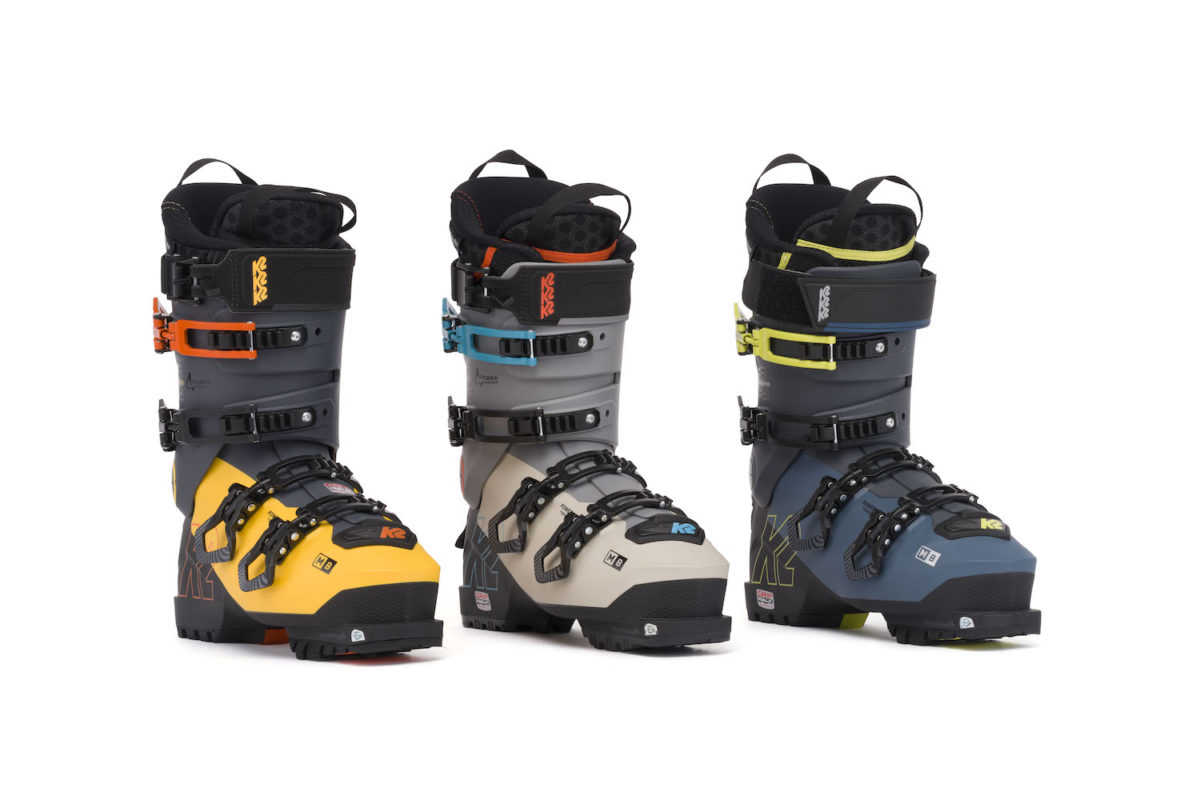
POINT 2 | 2 piece and 3 piece
[2-piece shell structure]
provides power transmission and flex, while the upper maintains the forward tilt angle of the legs and supports accurate positioning.
The 2-piece shell has excellent direct power transmission and is ideal for turning-oriented riding. If you enjoy turn control that traces the line you aimed for and high-speed gliding, there is no better ski boot than this.
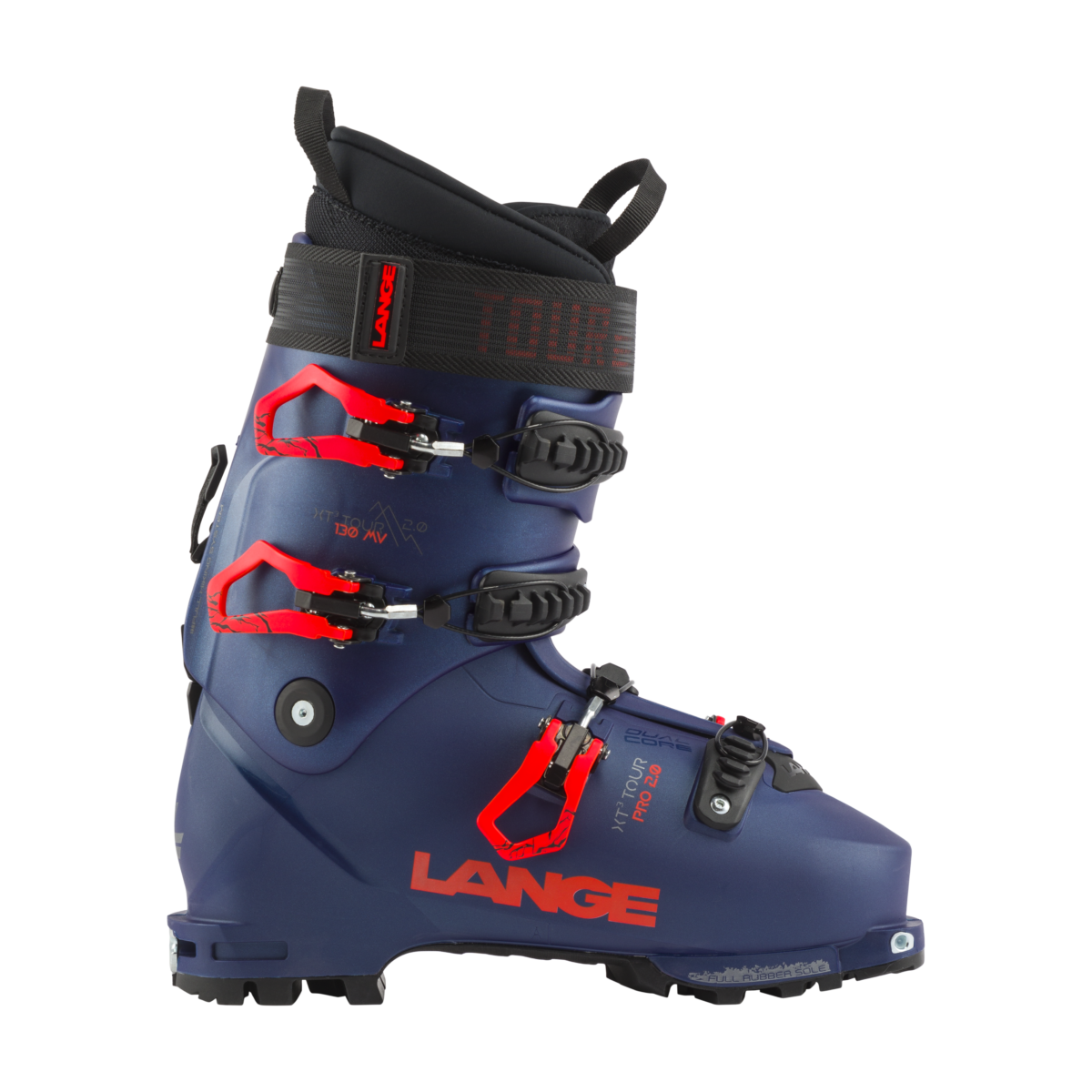
XT3 TOUR LIGHT MV 130
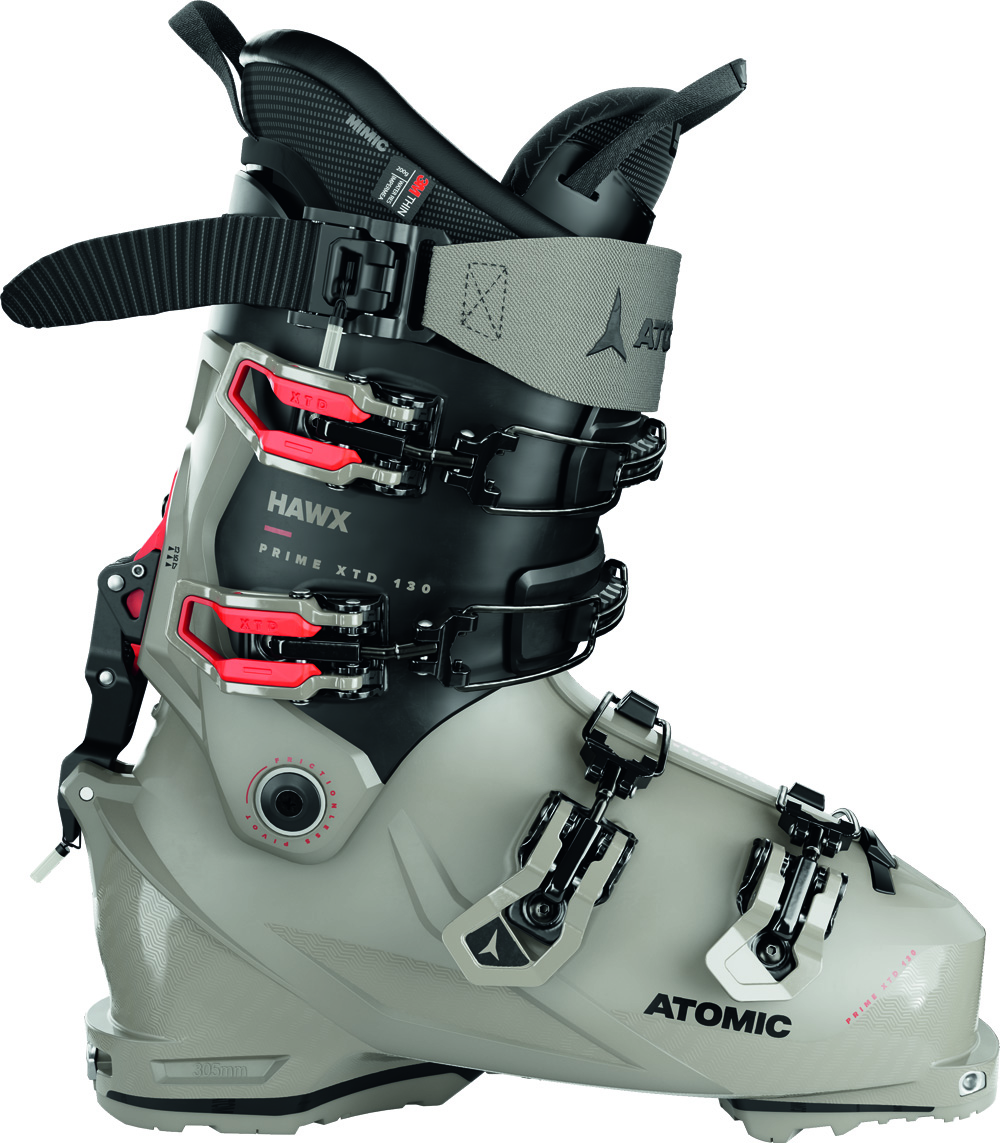
HAWX PRIME XTD 130GW
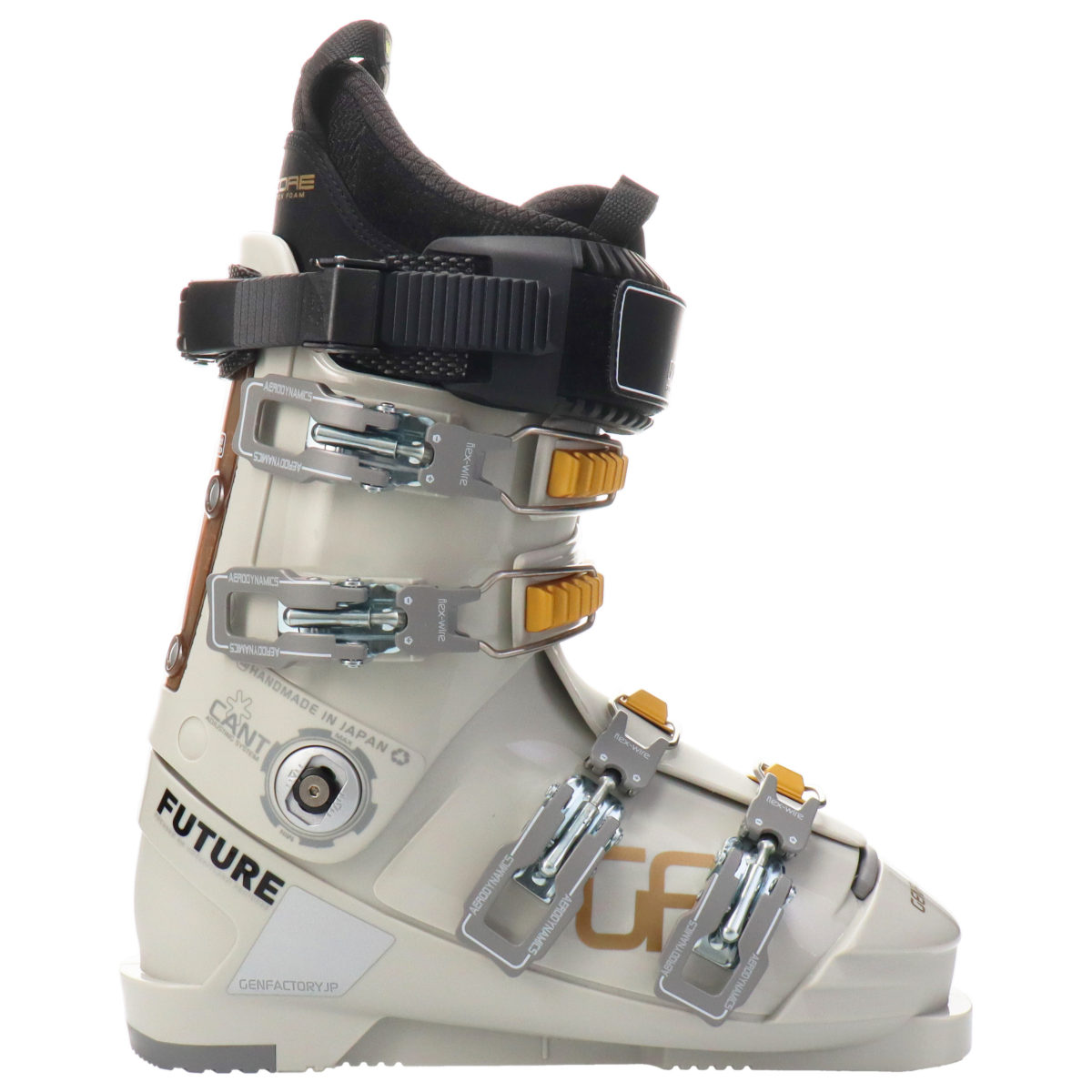
FUTURE
[3-piece shell structure]
A rigid lower shell transmits power, and an independent tongue is responsible for flex.
The cuff can be moved back and forth without difficulty. The 3-piece shell has an independent tongue that makes it easy to set the flex, and is very popular with skiers who value ankle movement. In addition, most tour boots adopt this 3-piece structure because the cuff has a large range of motion due to its structure. In addition, the hinge that connects the lower shell and the cuff is located close to the actual ankle, which is also a hidden factor that does not impair the flexible movement of the ankle.
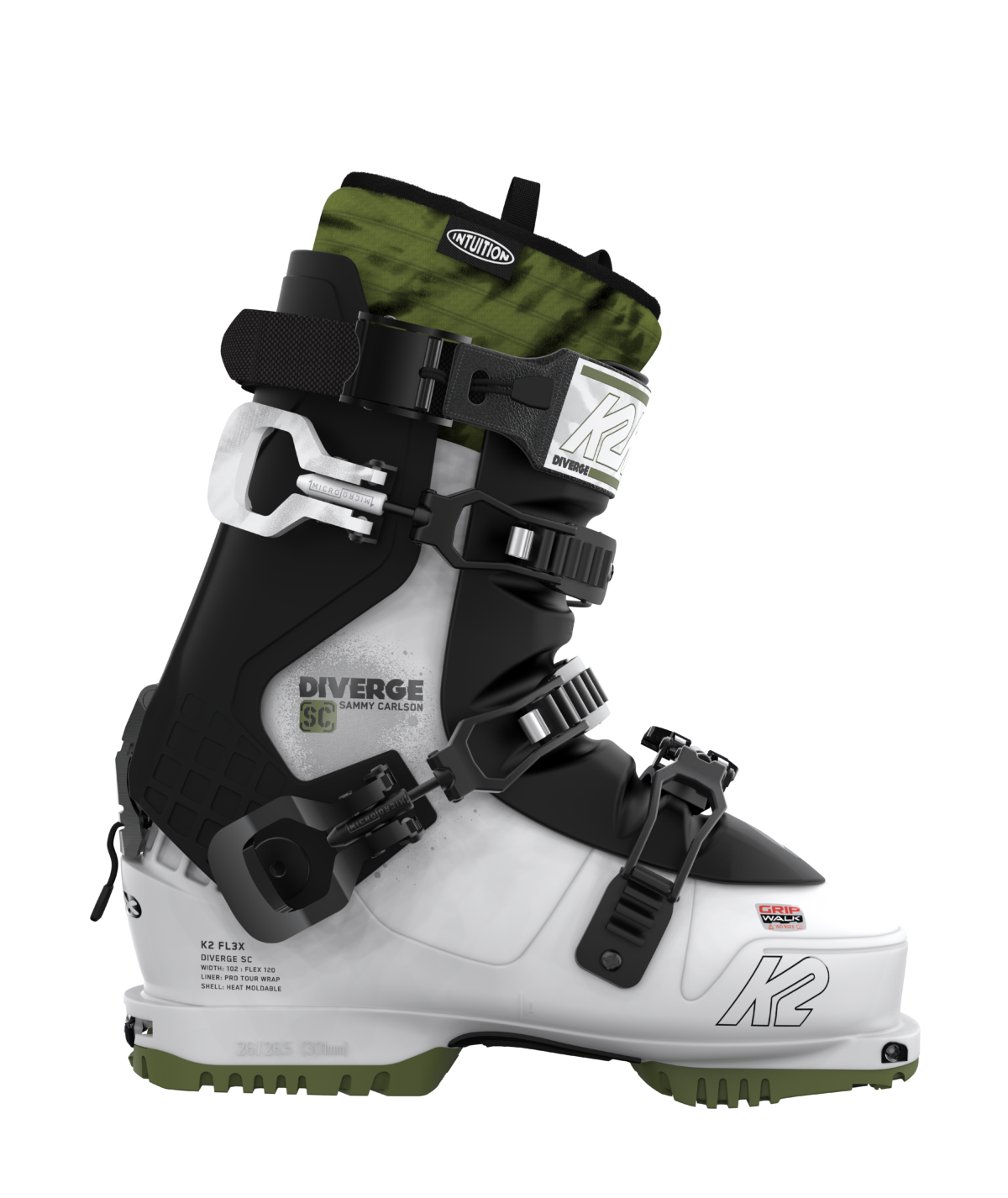
DIVERGE SC
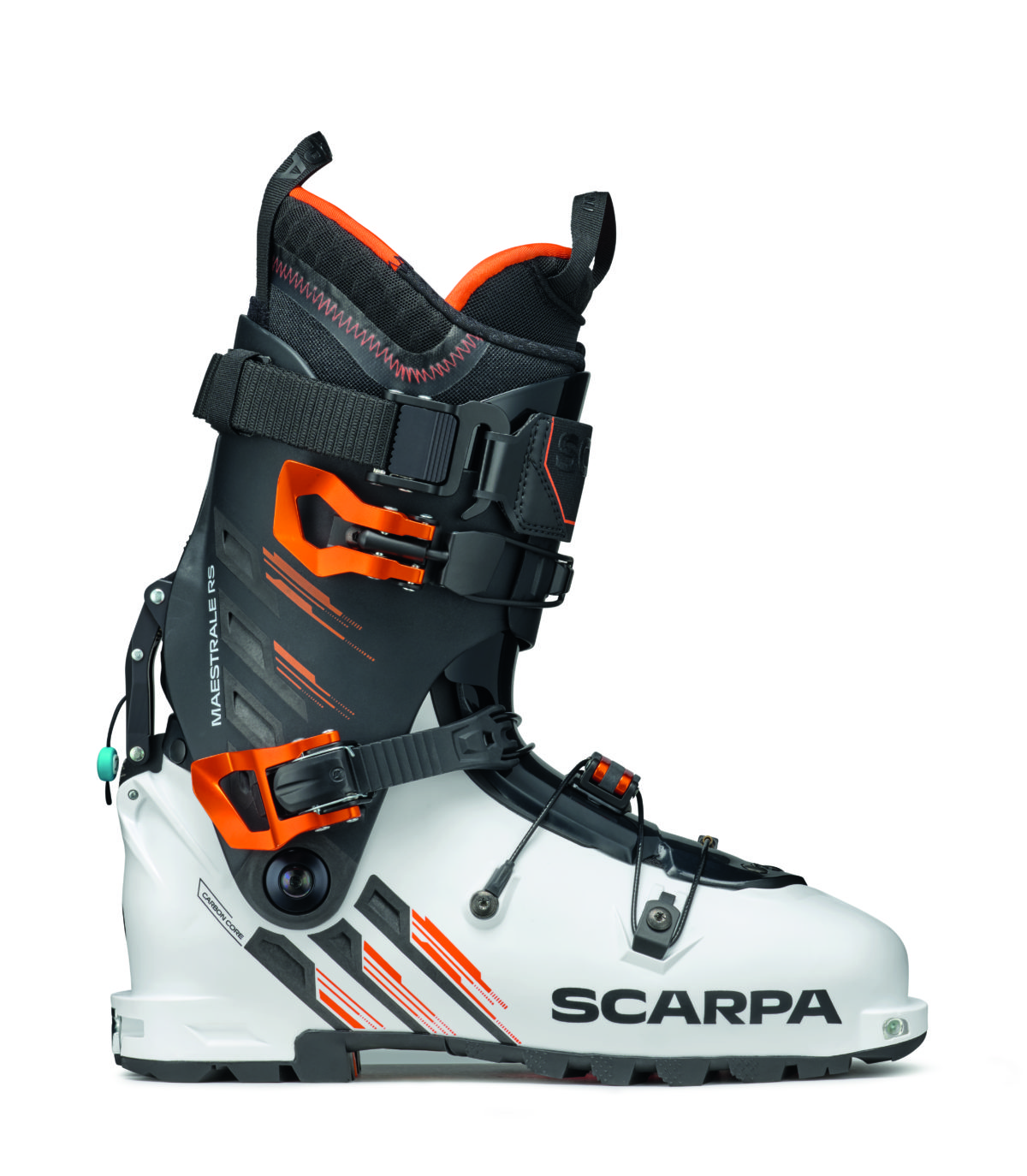
MAESTRALE RS
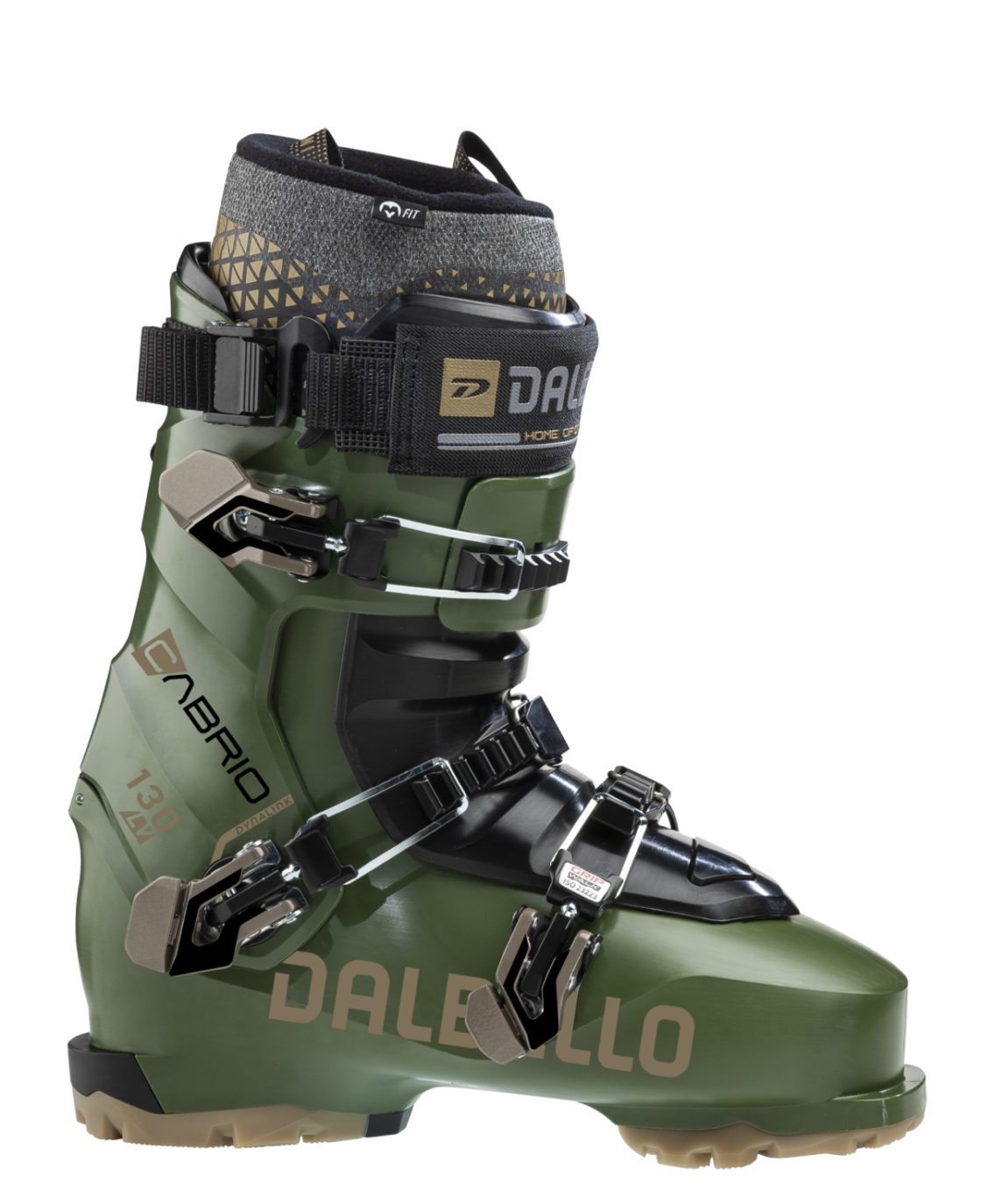
CABRIO LV 130
POINT 3 |Shell material
Polyurethane (PU) resin is used in the shells of many ski boots. It achieves the rigidity necessary for power transmission of ski boots and the sticky flex (flexibility and resilience) necessary for turns.
Polyamide resins known as Pebax or Grilamid (also known as Grilamid) are often found in the shells of lightweight tour boots. Compared to polyurethane, it is a harder and lighter material, so the thickness of the shell can be reduced to reduce the overall weight. It is also valued as a material with little change in hardness even at low temperatures.
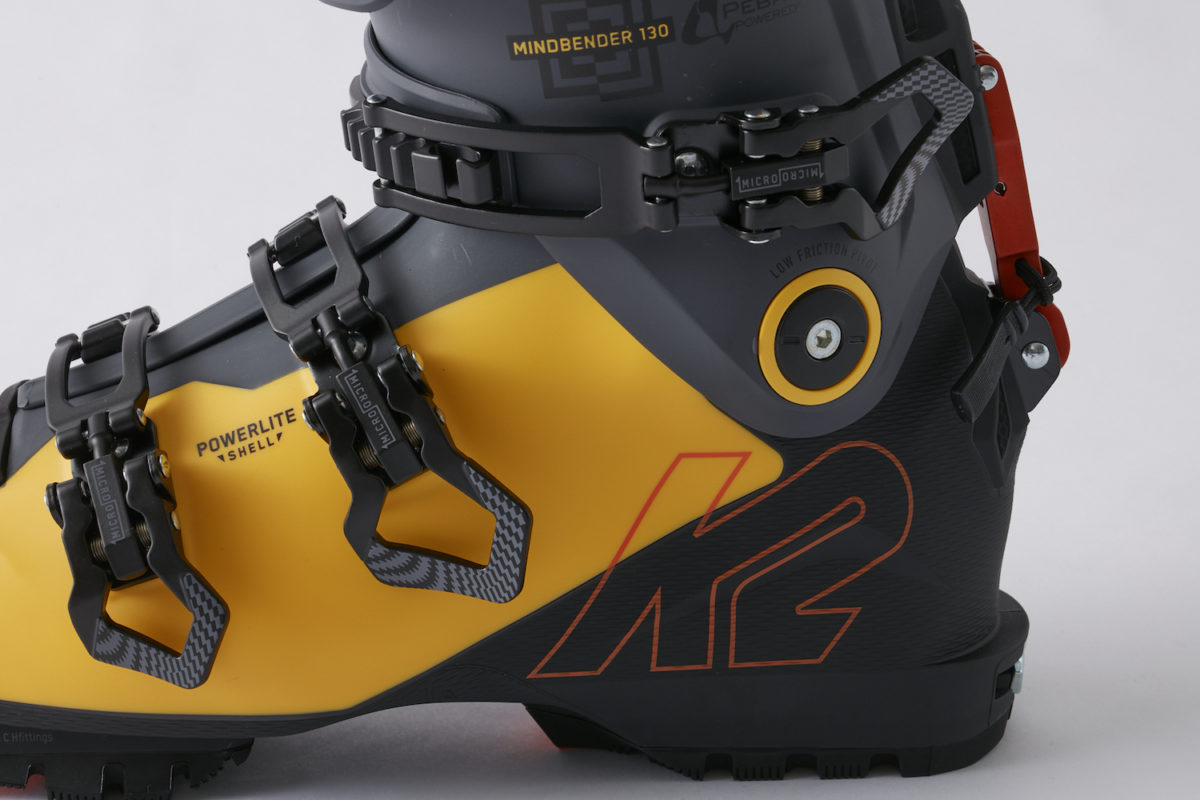
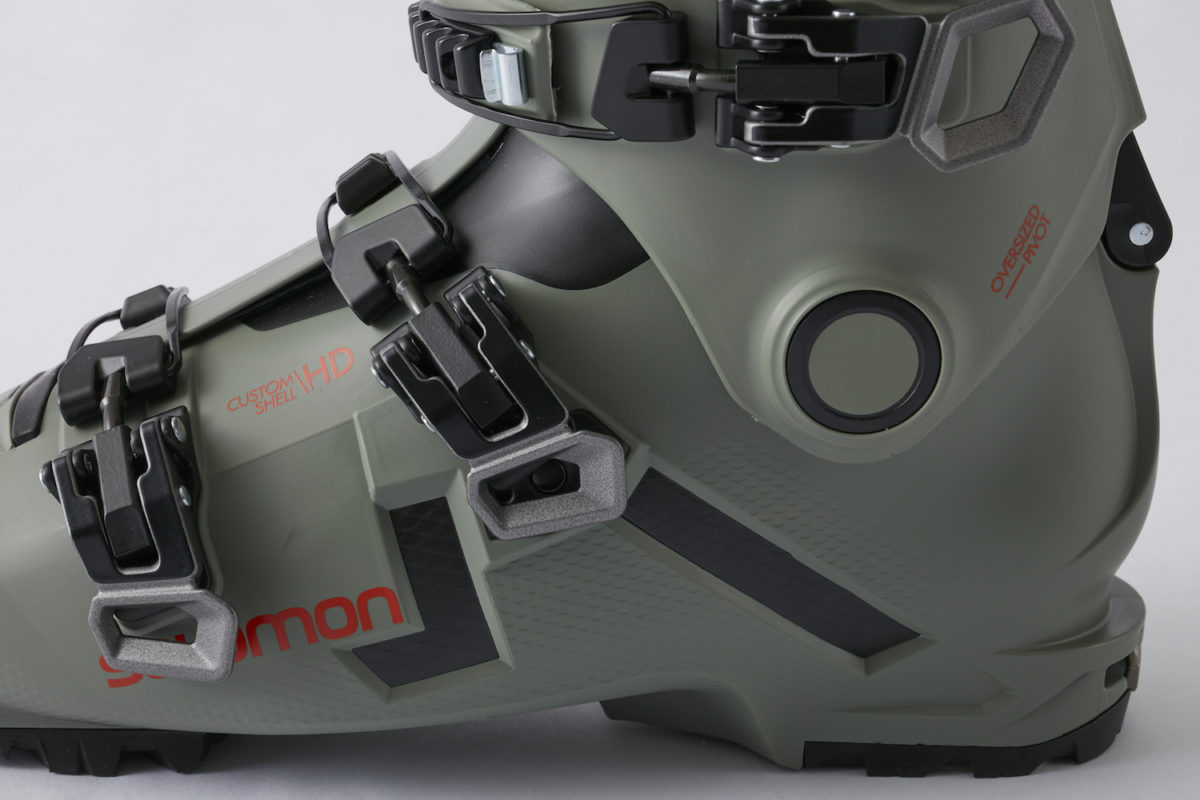
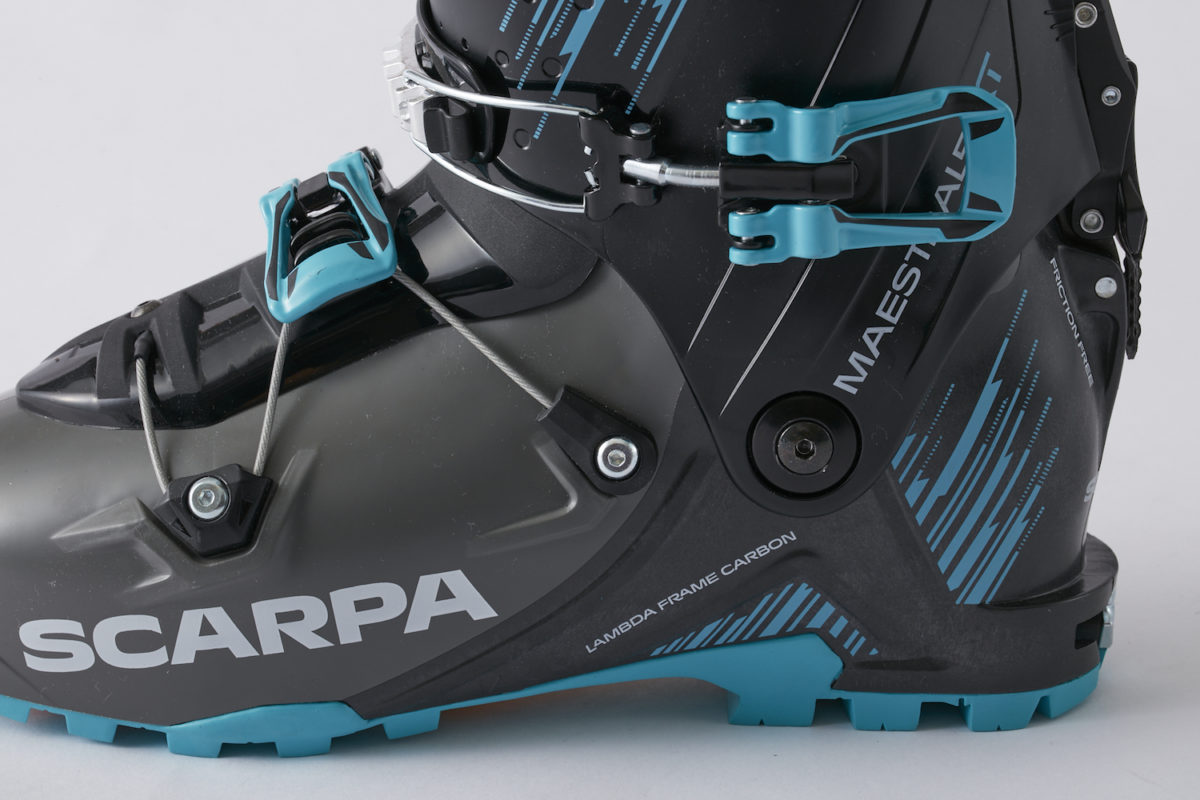
POINT 4 | Last width
"Last" is a shoe last. The narrower the last width, the stronger the holdability, and the wider the last width, the higher the comfort. Race boots are generally in the 90mm range and freeride boots in the 100mm range. A wider last width is recommended if heat retention is important, such as in the backcountry.
POINT 5 |Differences in buckles due to shell structure
The number of buckles and the way of thinking about their positions are also very different between 2-piece shells and 3-piece shells. Two-piece boots that you want to hold tight all the way to your toes often have 4 buckles that tighten from your toes to your ankles. On the other hand, the 3-piece boot emphasizes holding from the heel to the arch of the foot, leaving room for the toes. As a result, it also has the advantage of reducing the pain of your toes getting stuck when landing from a jump and reducing the coldness of your fingertips in low temperatures.
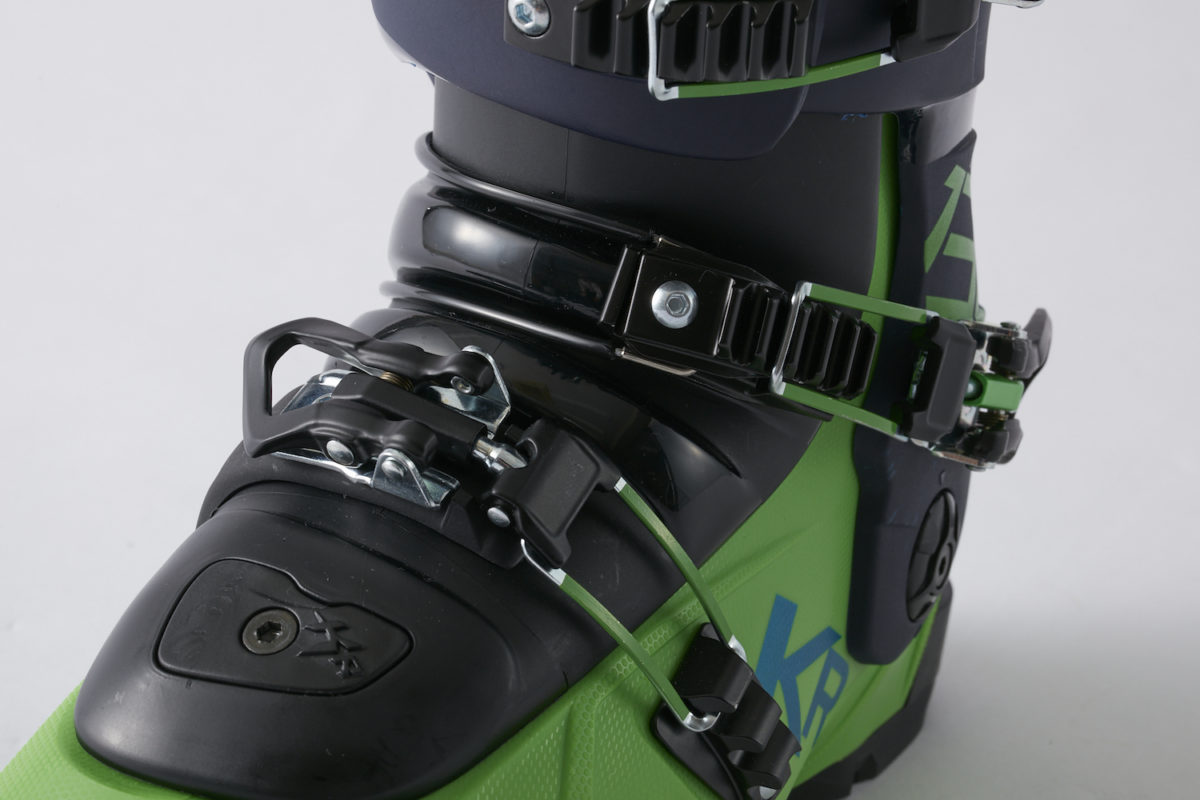
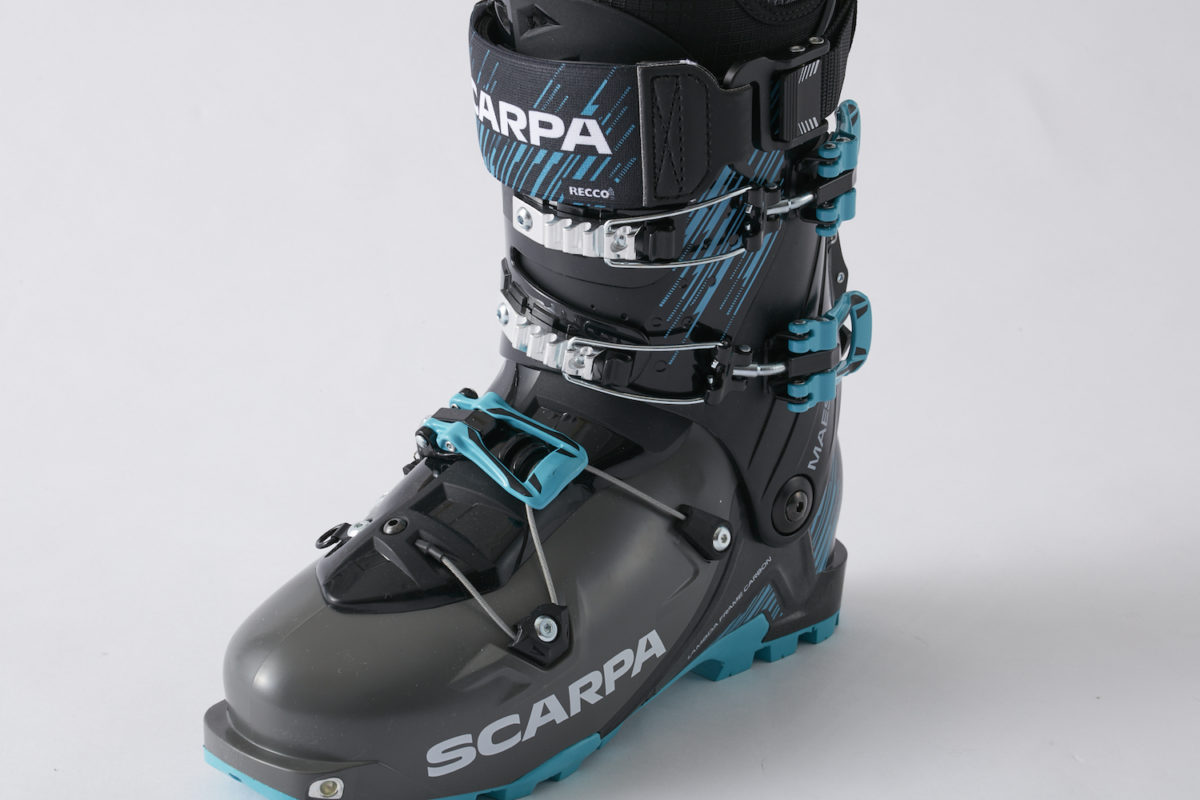
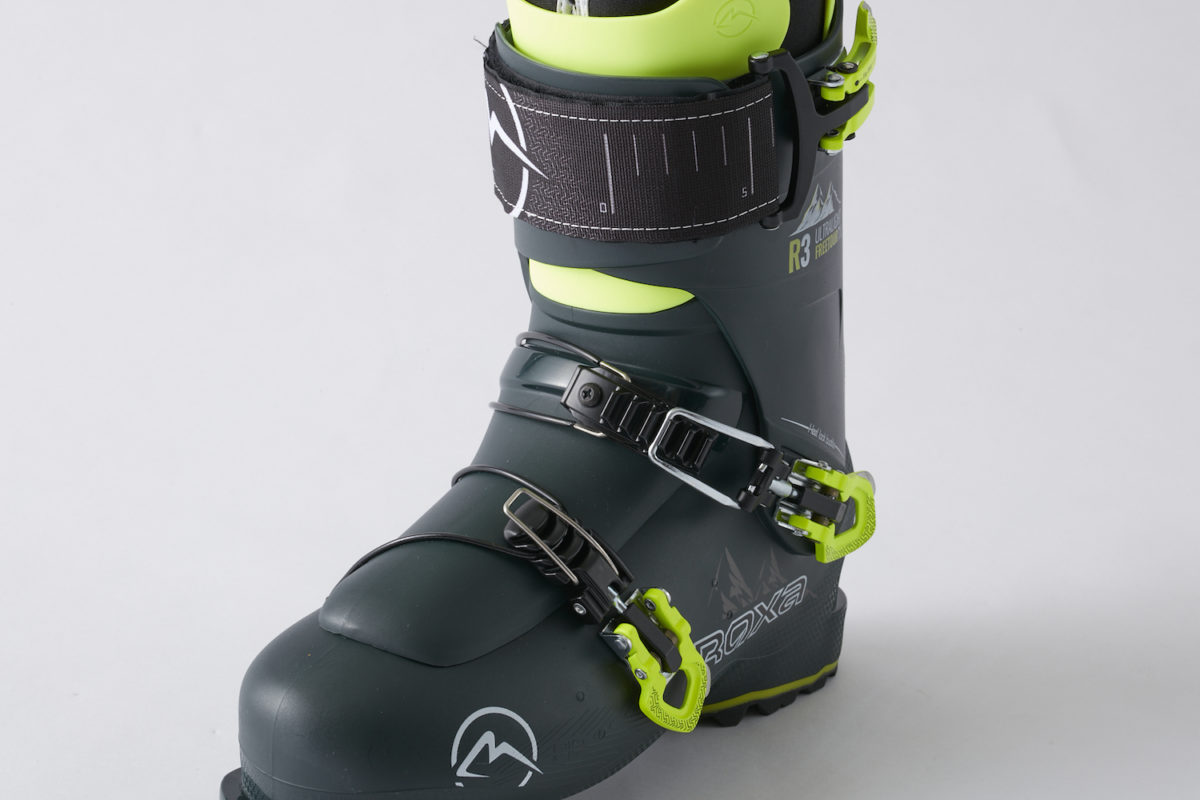
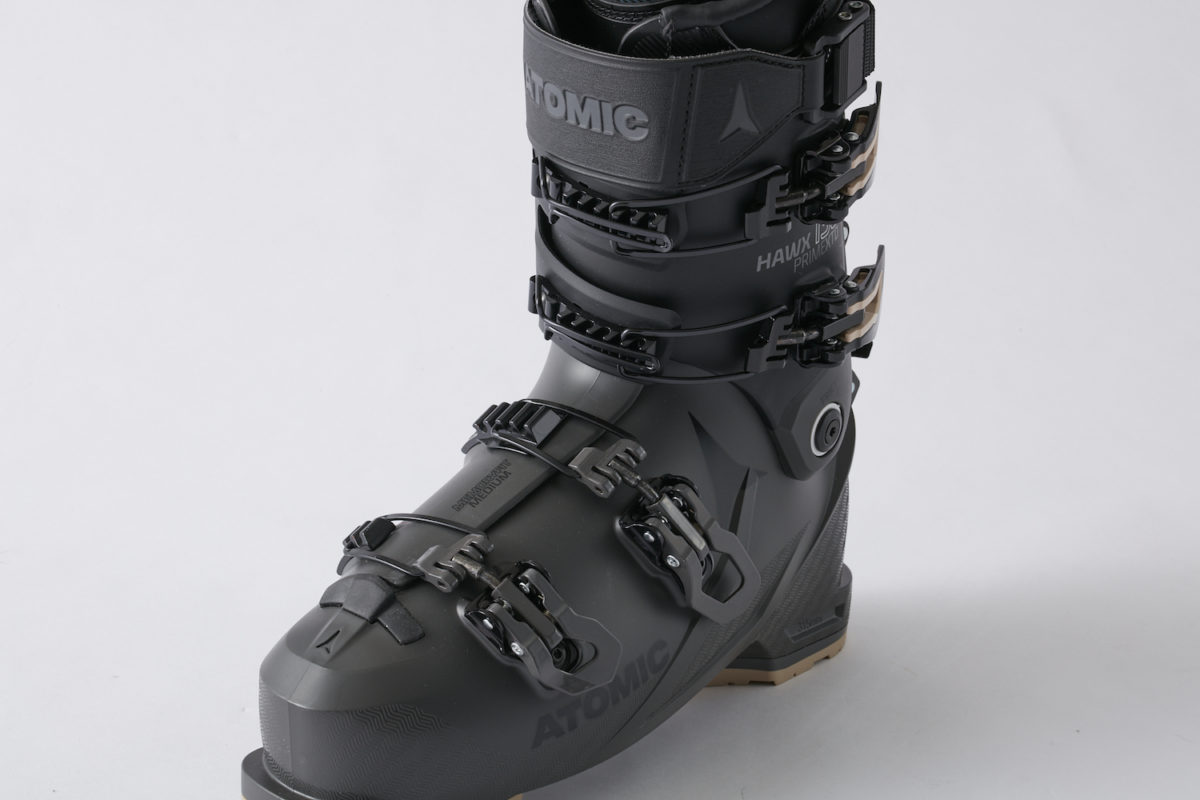
POINT 6 | 3 types of sole shapes
There are three main types of sole.
There are two international standards: the alpine boot standard (ISO 5355) and the tour boot standard (ISO 9523). In addition, grip walk soles that are compatible with safety bindings while being tour boot standards are increasing. Apart from the grip walk, there is no compatibility with bindings other than the corresponding standard bindings because the edge height and sole shape are different. Even if you can put it on, it is very risky and should be avoided because the binding's original retention and release functions do not work properly. *See here for compatibility with bindings.
[Alpine Standard Sole (ISO 5355)]
So-called conventional ski boot flat sole. Basically only compatible with Alpine standard bindings
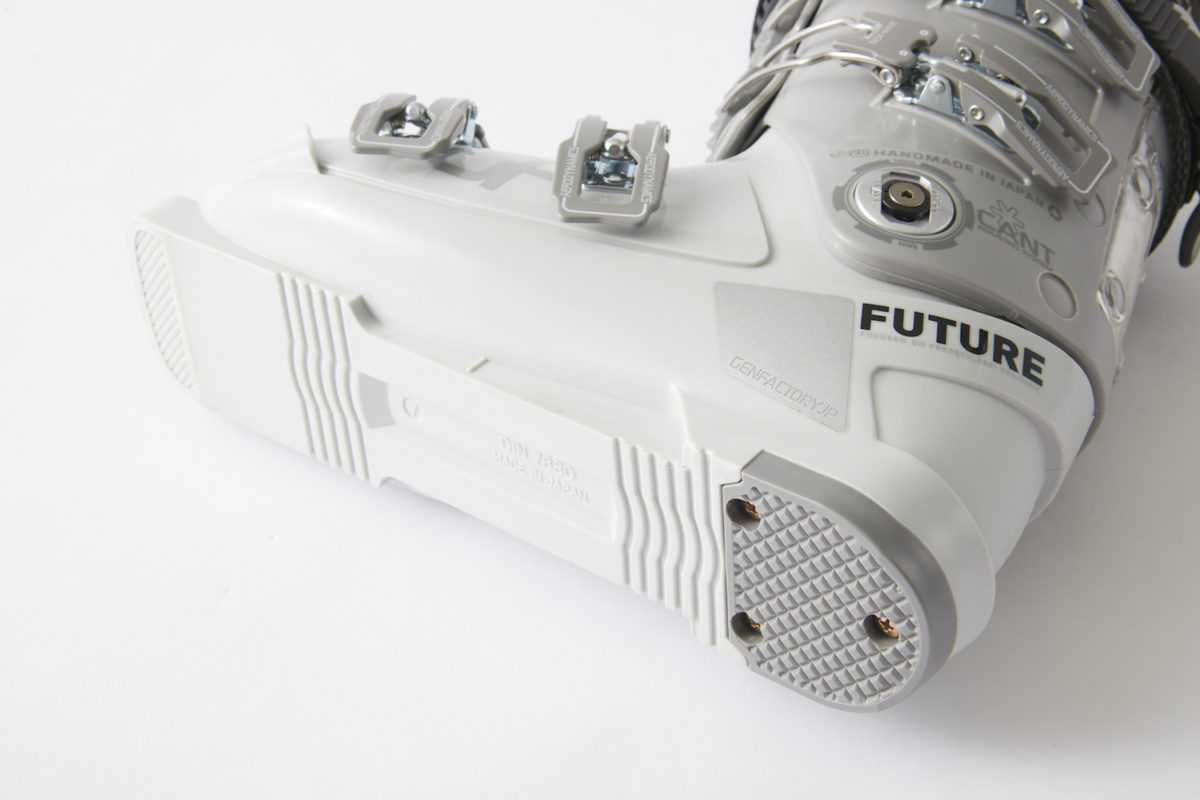
[Tour standard (ISO 9523)]
Sole equipped with rubber block and rocker for easy walking. The toe edge height is higher than the alpine standard sole, so it is not compatible with alpine standard bindings.
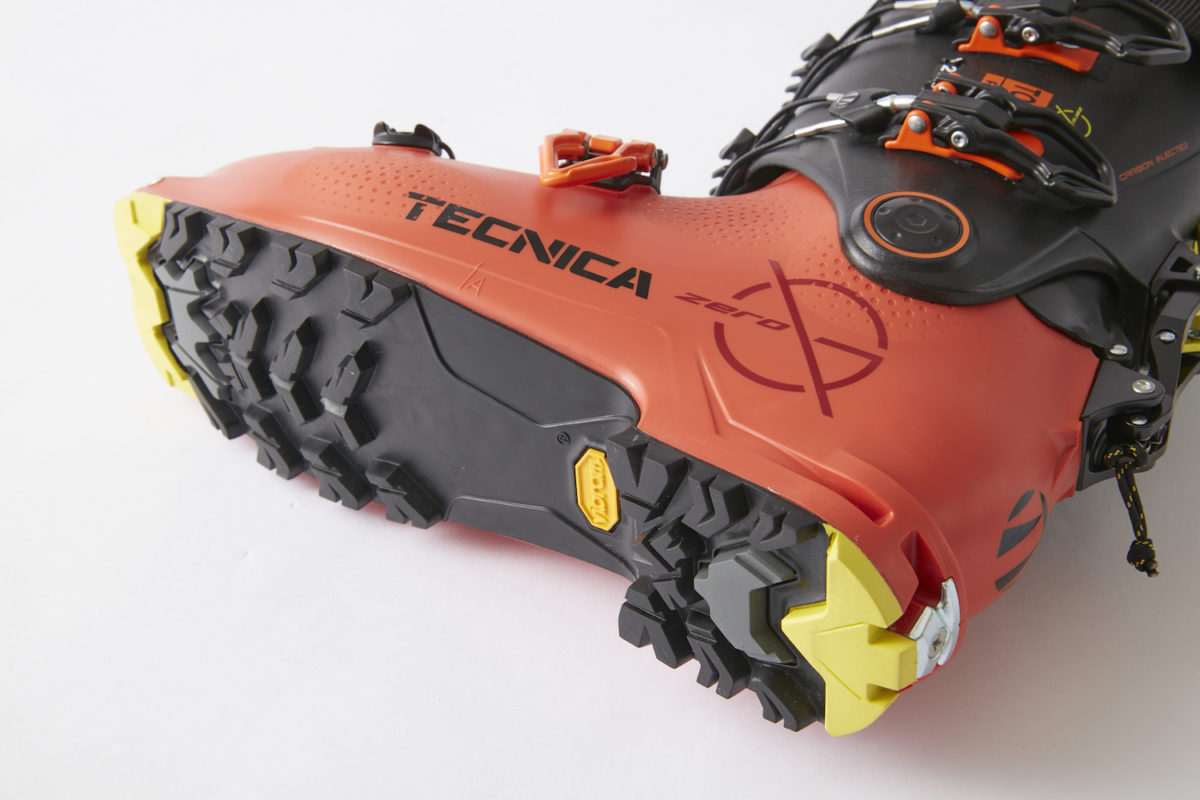
[Grip walk sole]
A resin plate corresponding to the sliding AFD of the binding is placed in a rubber block that is easy to walk. Basically, many of them comply with the tour boot standard (ISO 9523).
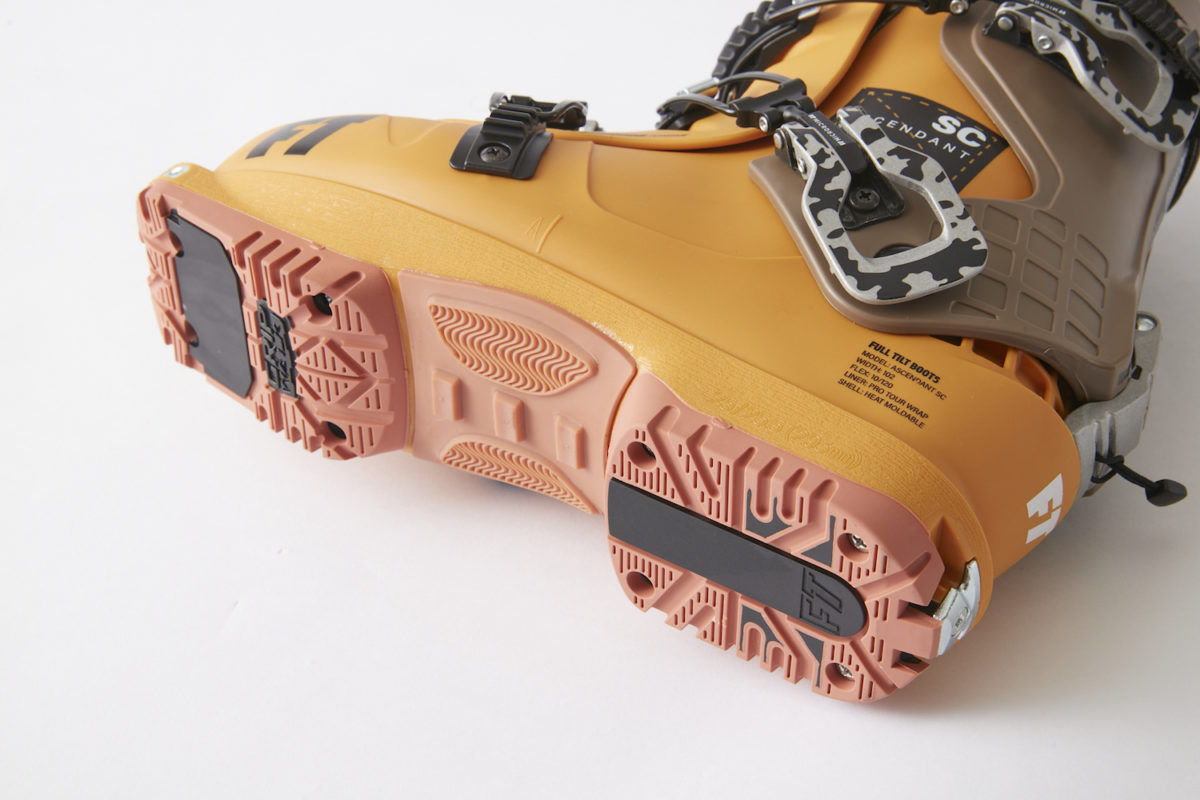
POINT 7 | Compatibility with tech bindings
Tech bindings can be used as long as the toe and heel have Tech inserts. Many tour boots now support this, including Gripwalk soles.
[Toe]
On the toe side, a system in which the tech insert provided on the edge is sandwiched with a pin and fixed
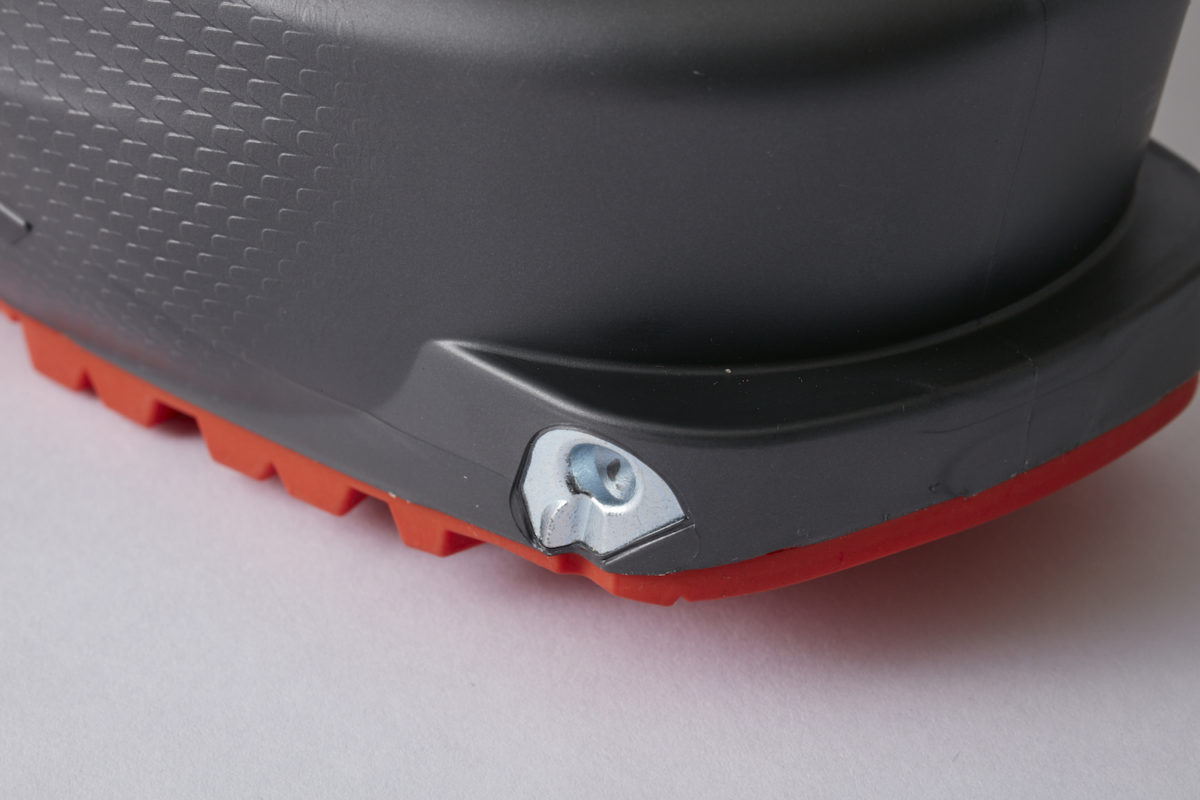
[Heel]
Hook and hold the two bars on the heel piece of the tech binding
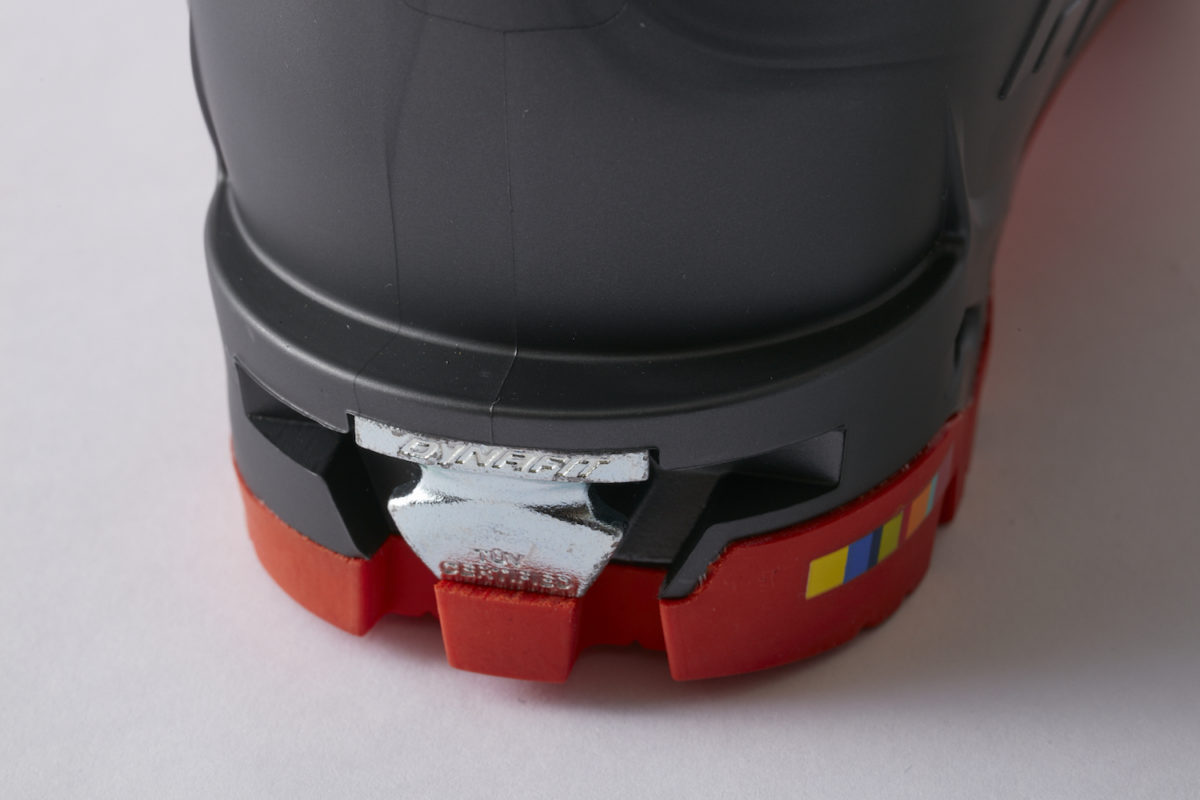
POINT 8 | Inner boots
Many boots now have a heat moldable inner (liner). Not only does it improve the fit with your feet, but it also fills the gap between the inner and the shell, so it doesn't slip easily inside the shell, and the bare feet and the shell are firmly integrated. The high heat retention is also a big feature. In addition, there are more models that can heat mold the shell, so check it out.
[Wrap type]
The shape that wraps around the ankle creates a fit that can be held to some extent without tightening the buckle.
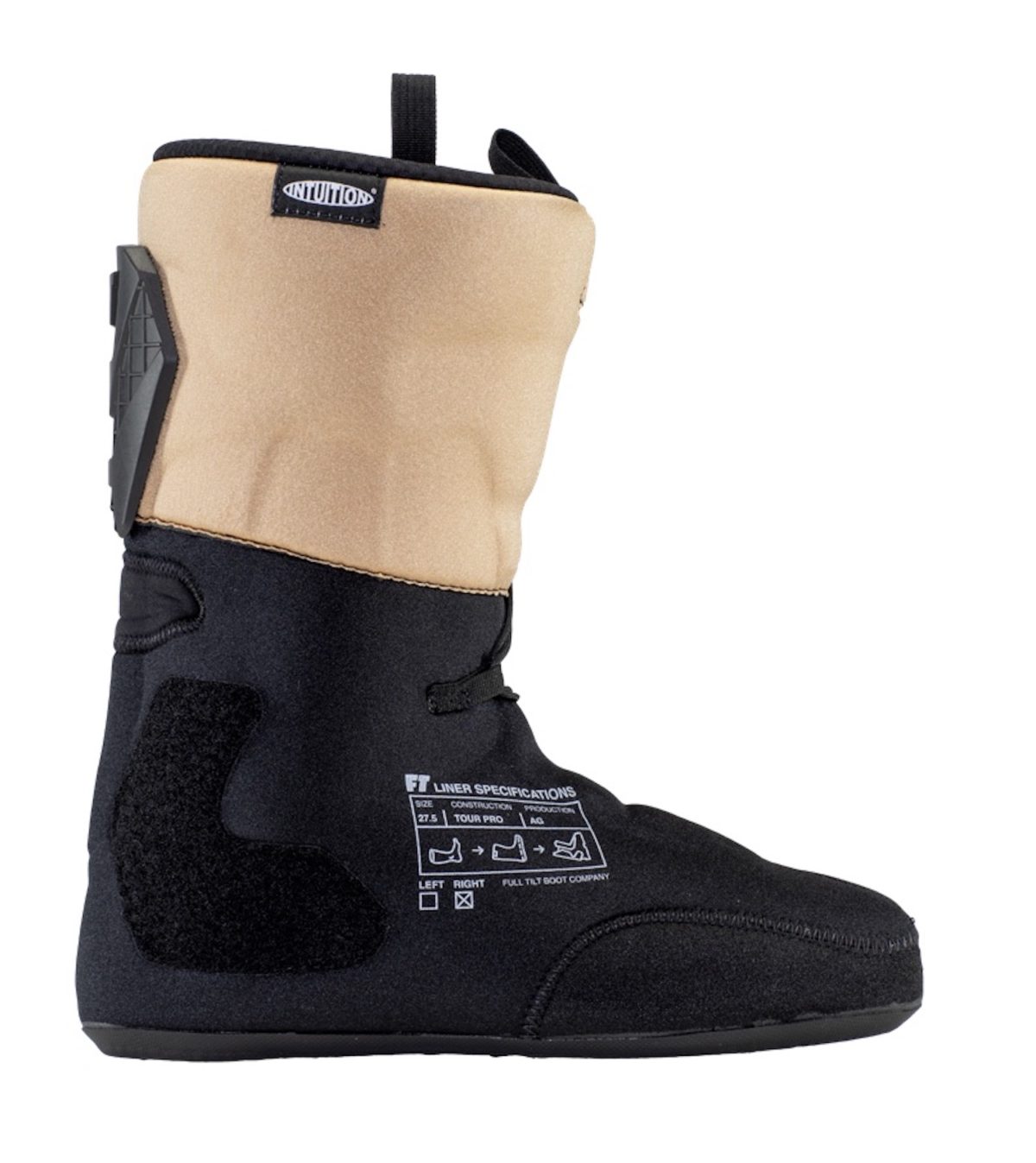
[Tang type]
The orthodox inner with an independent tongue fits well and follows the movement of the ankle during turns.
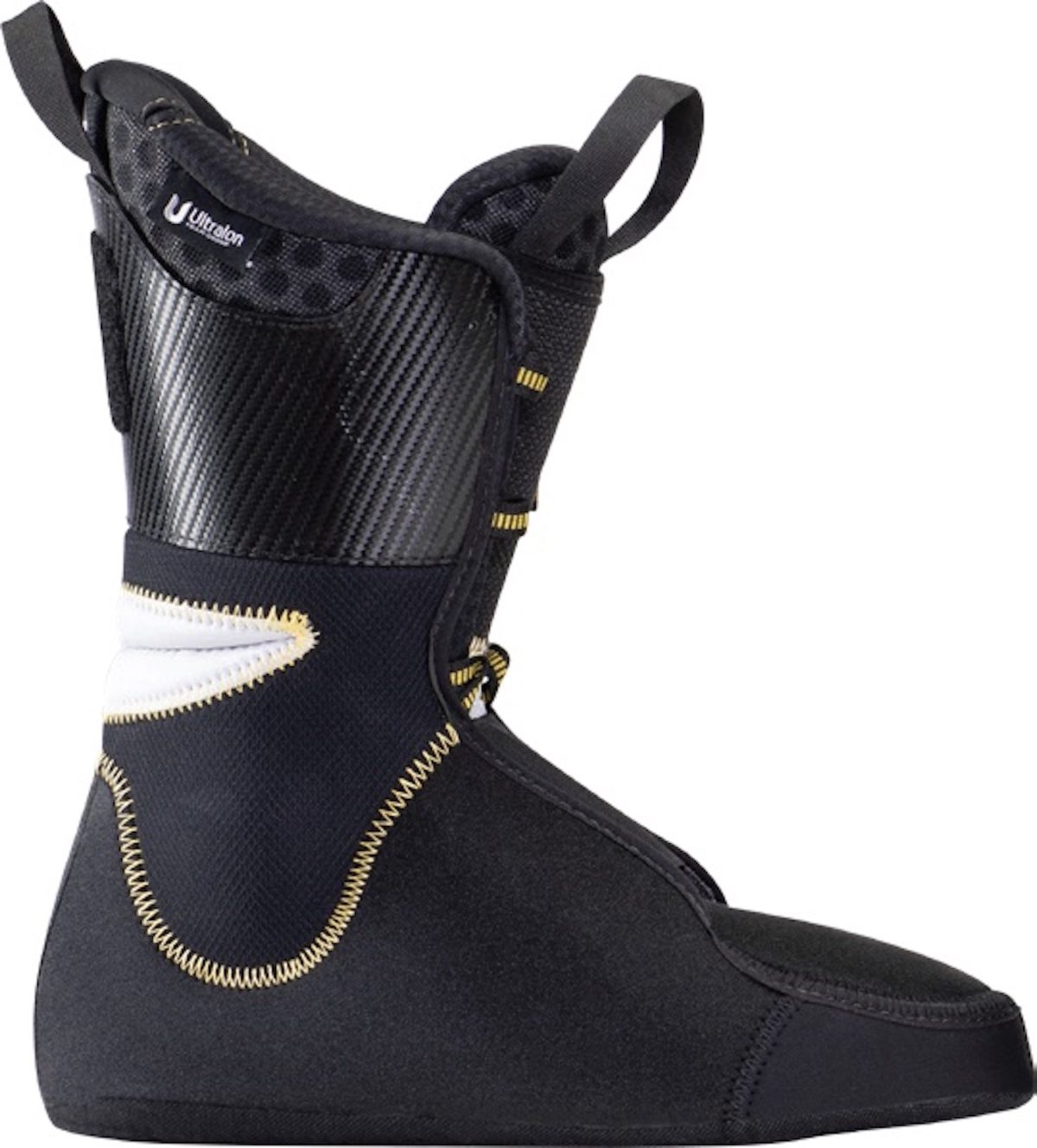
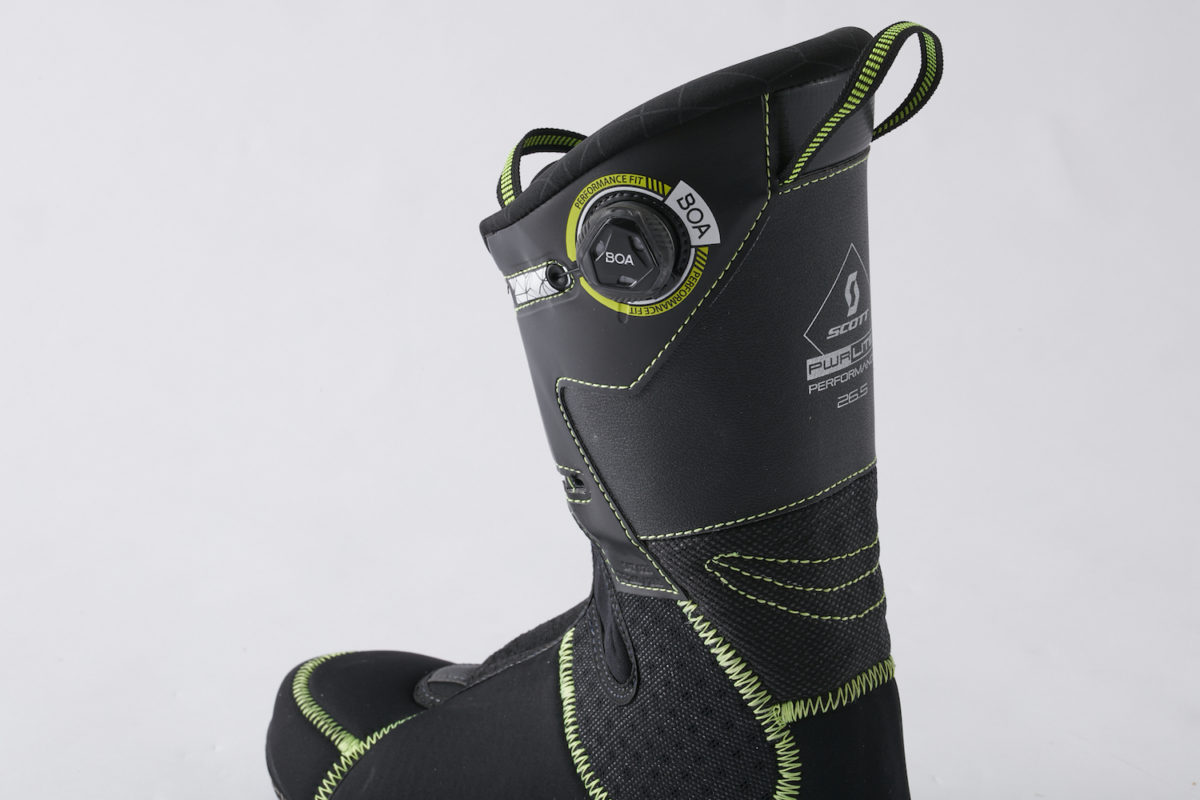
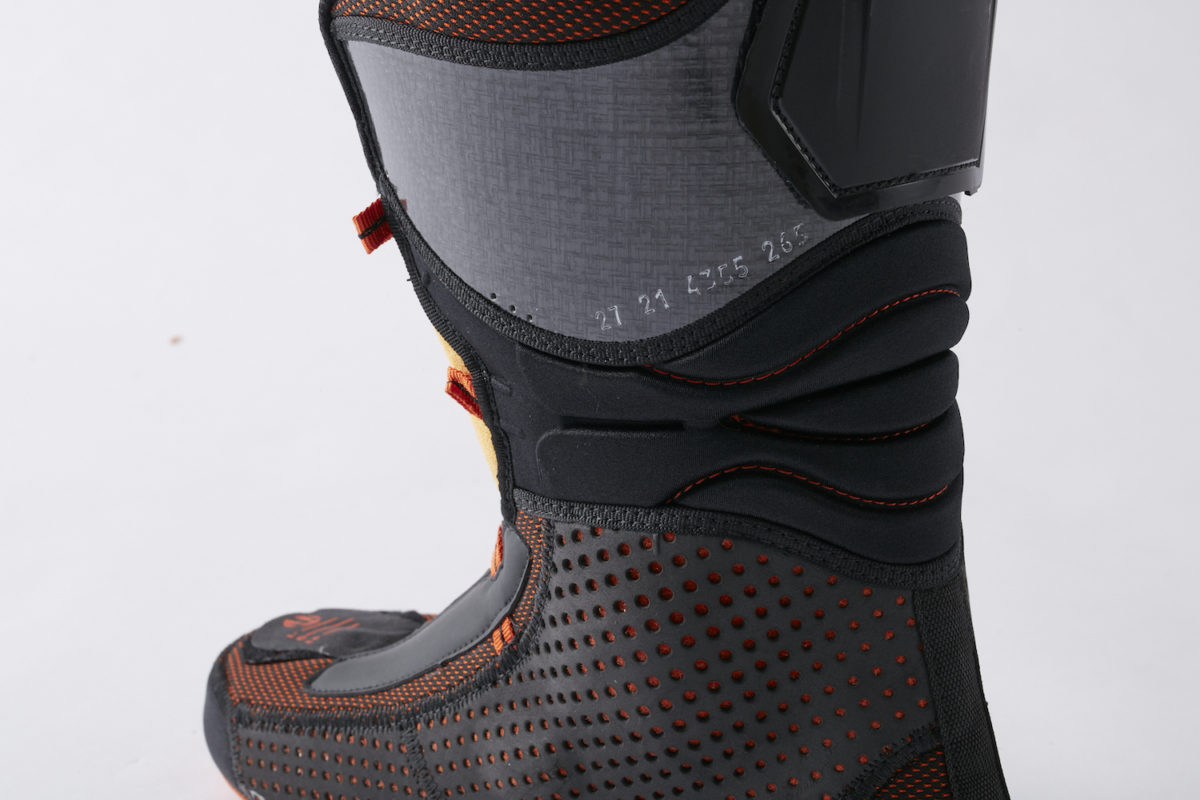
[Insole]
The three-dimensional insole that fits well on the heel prevents the sole of the foot from slipping and is effective for improving performance. In addition, the thermoformable insoles sold separately on the market are also very effective with a small investment.
POINT 9 | Walk mode function
Currently, not only tour boots, but many freeride models are equipped with walk mode. When the mode is changed, the lock is released and the cuff can move back and forth. You may not feel much effect when climbing steep slopes or short climbs, but when traveling on gentle slopes or on flat ground, a wider range of motion of the cuff allows you to take a larger stride with each step, resulting in a faster and easier ride. can move.
In addition to the backcountry scene, there are many places where you can take advantage of this advantage, such as moving in a large parking lot at a ski resort, standing side by side on a ropeway, or riding while standing.
[Mode change lever]
Switch between gliding mode and hike mode with the lever located at the back of the cuff.
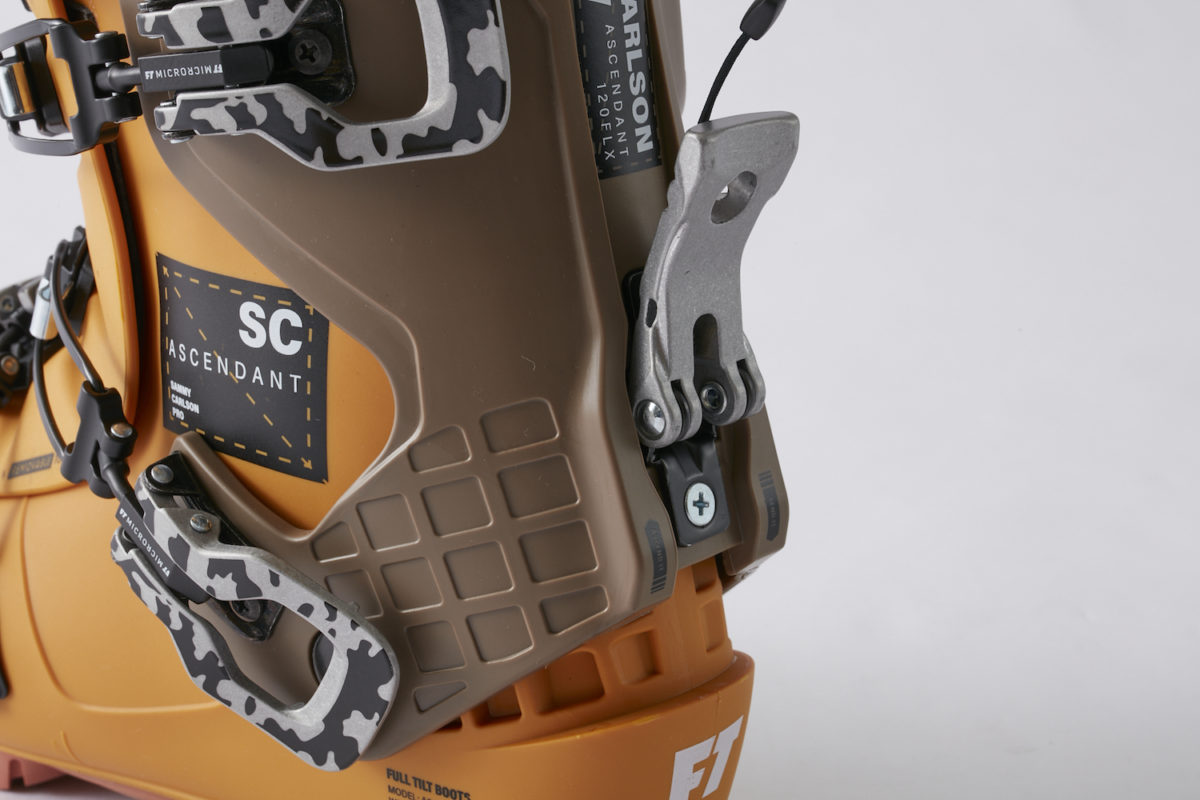
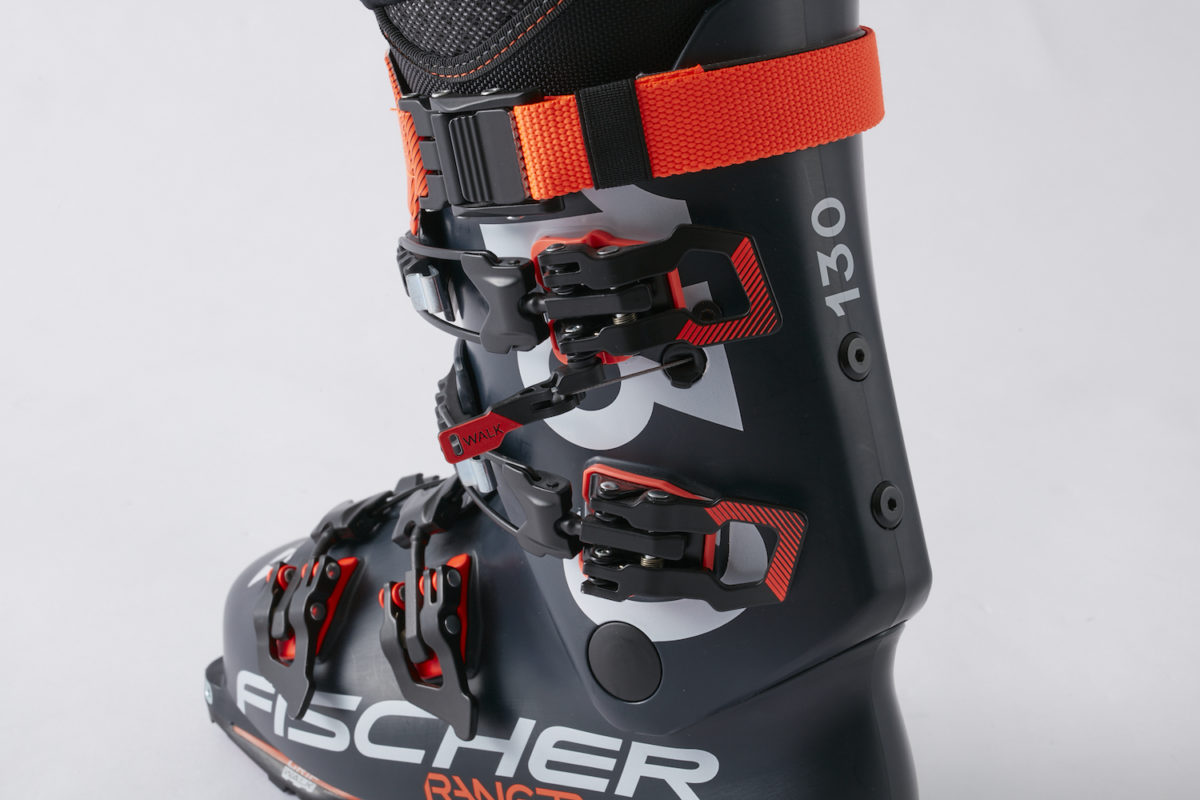
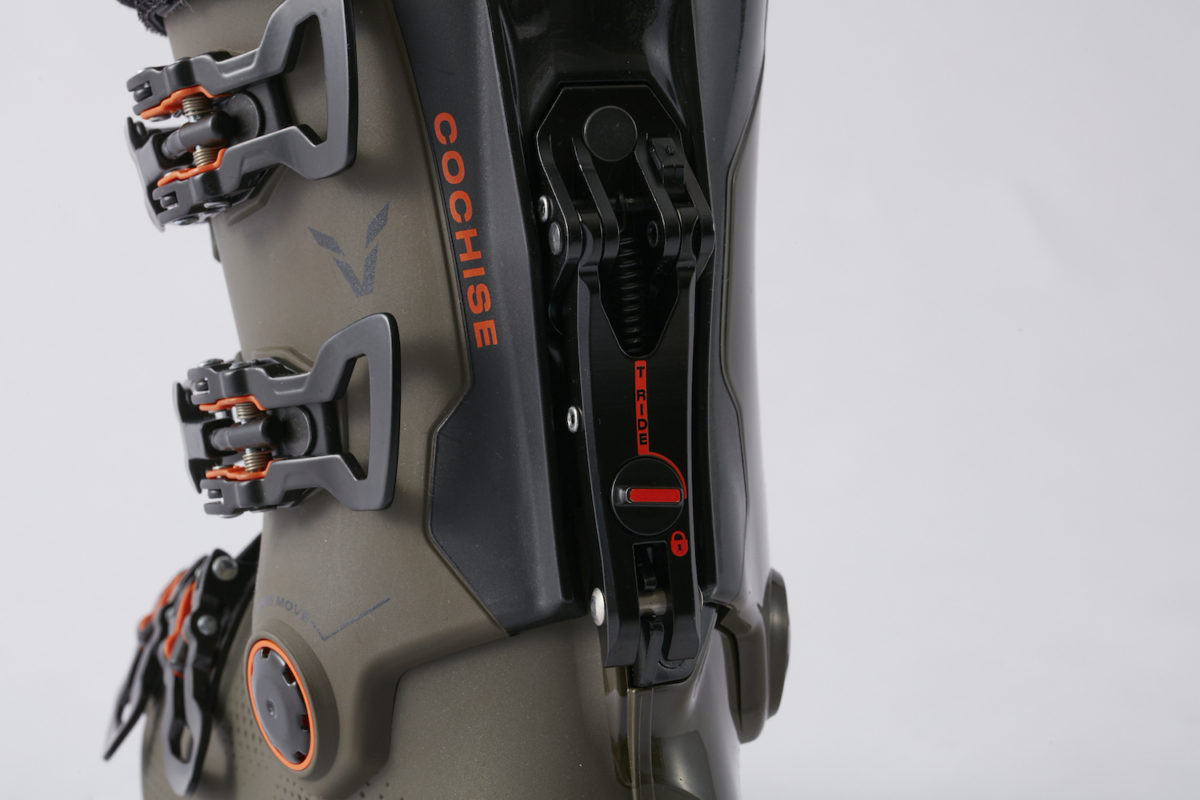
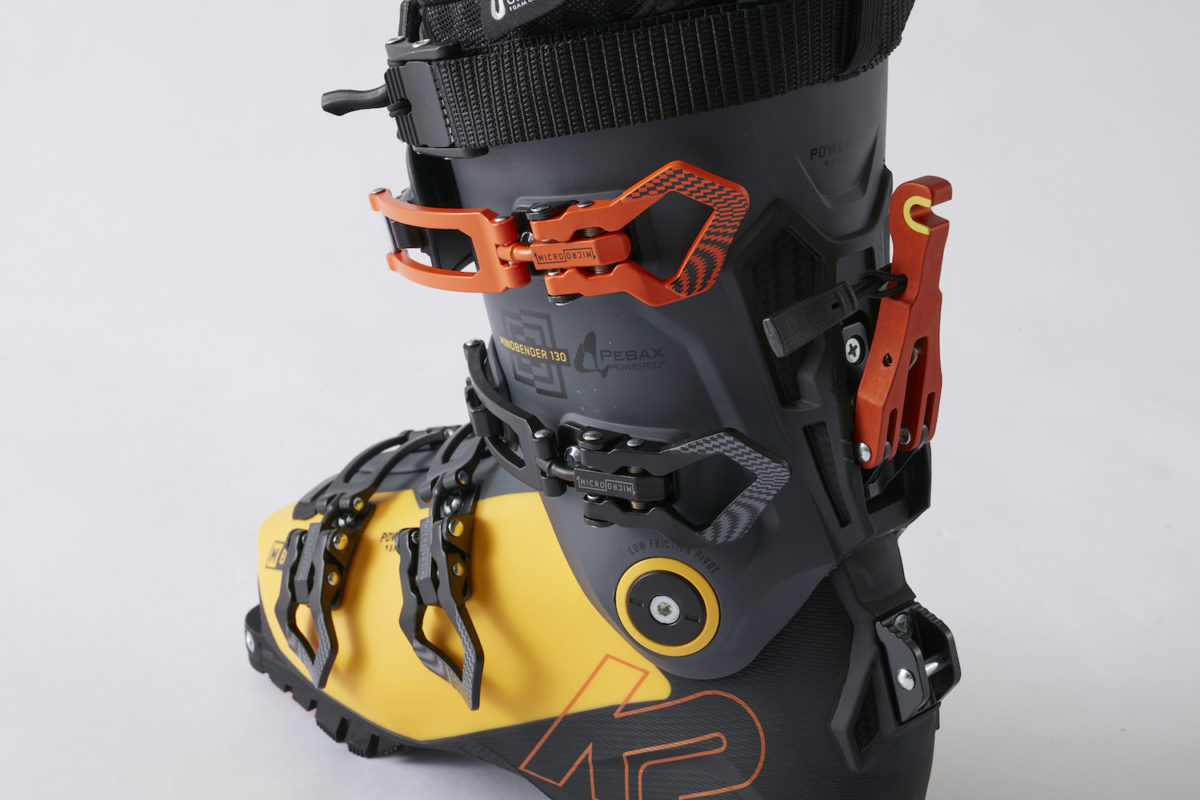
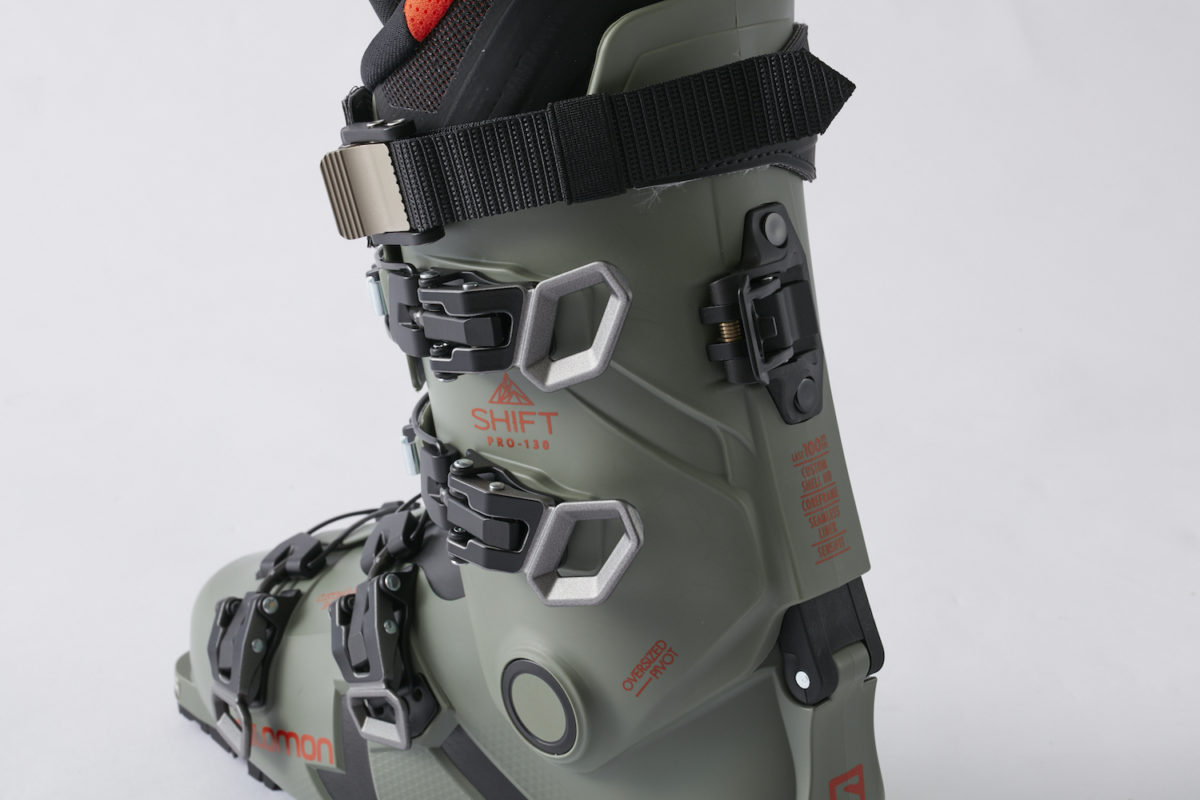
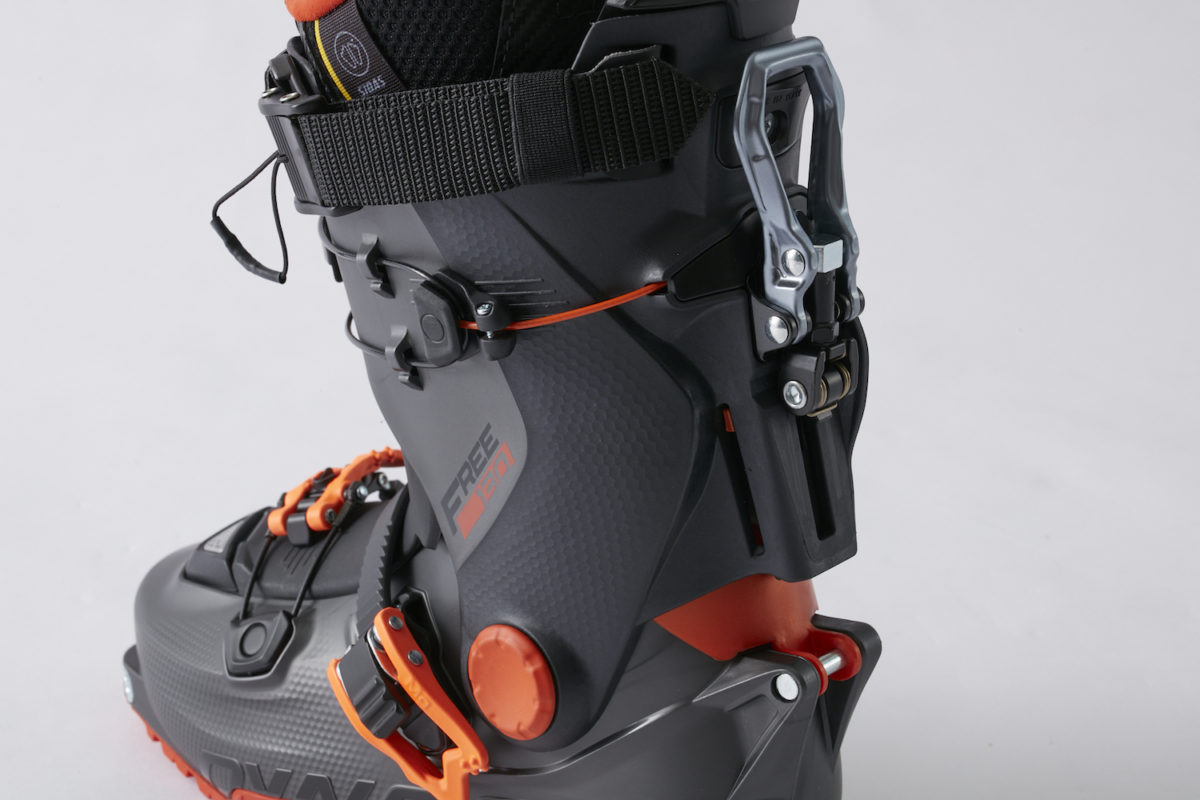
Supervision = Hiroyuki Tsuji (Gen Factory), Ryusuke Miura (MDV Sports Japan), Tomoya Takahashi (Dinafit)
Text = Chikara Terakura
A new era in boots!
